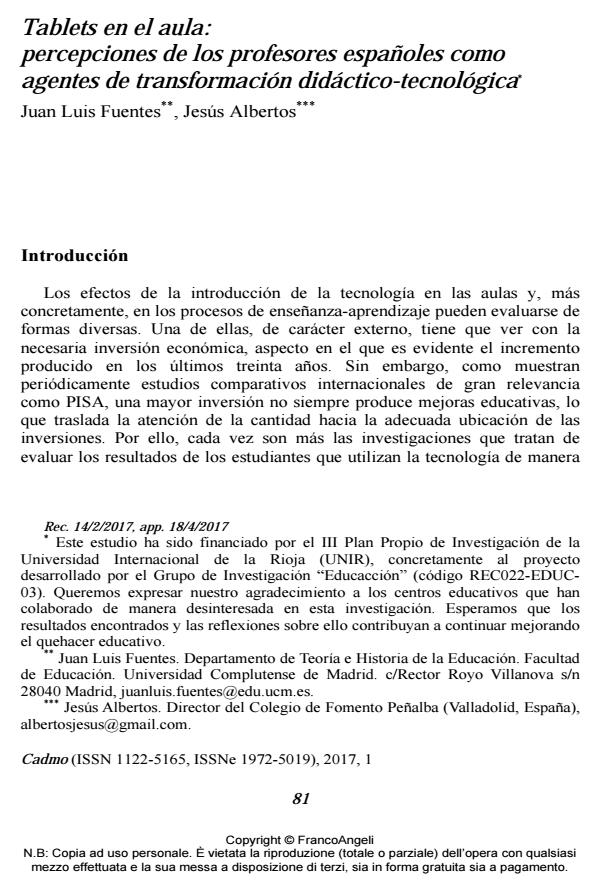Tablets en el aula: percepciones de los profesores españoles como agentes de transformación didáctico-tecnológica
Titolo Rivista CADMO
Autori/Curatori Juan Luis Fuentes, Jesús Albertos
Anno di pubblicazione 2017 Fascicolo 2017/1
Lingua Spagnolo Numero pagine 20 P. 81-100 Dimensione file 208 KB
DOI 10.3280/CAD2017-001009
Il DOI è il codice a barre della proprietà intellettuale: per saperne di più
clicca qui
Qui sotto puoi vedere in anteprima la prima pagina di questo articolo.
Se questo articolo ti interessa, lo puoi acquistare (e scaricare in formato pdf) seguendo le facili indicazioni per acquistare il download credit. Acquista Download Credits per scaricare questo Articolo in formato PDF

FrancoAngeli è membro della Publishers International Linking Association, Inc (PILA)associazione indipendente e non profit per facilitare (attraverso i servizi tecnologici implementati da CrossRef.org) l’accesso degli studiosi ai contenuti digitali nelle pubblicazioni professionali e scientifiche
- 2023 IEEE International Conference on Technology Management, Operations and Decisions (ICTMOD) Dámaris Elizabeth Burga-Mori, Brenda Saby Trujillo-Valladolid, Miguel Humberto Panez-Bendezú, Cristian Armando Rios-Lama, Mg. Jorge Alberto Vargas-Merino, pp.1 (DOI:10.1109/ICTMOD59086.2023.10438113)
- Tratamiento con radioyodo de la patología tiroidea Pilar Tamayo-Alonso, Paloma Garcia-Talavera, Enrique Martín-Gómez, Jose Cañadas-Salazar, Luis Gonzaga Díaz-González, in Revista ORL /2019 pp.205
DOI: 10.14201/orl.21523 - Pedagogía con carácter: aproximación a la disciplina pedagógica como campo de reflexión del sujeto de la educación a partir de Ricoeur Marc Pallarès Piquer, José Vicente Villalobos, Juan Diego Hernández Albarracín, Ismael Cabero Fayos, in Bajo Palabra /2020 pp.525
DOI: 10.15366/bp.2020.24.026
Juan Luis Fuentes, Jesús Albertos, Tablets en el aula: percepciones de los profesores españoles como agentes de transformación didáctico-tecnológica in "CADMO" 1/2017, pp 81-100, DOI: 10.3280/CAD2017-001009